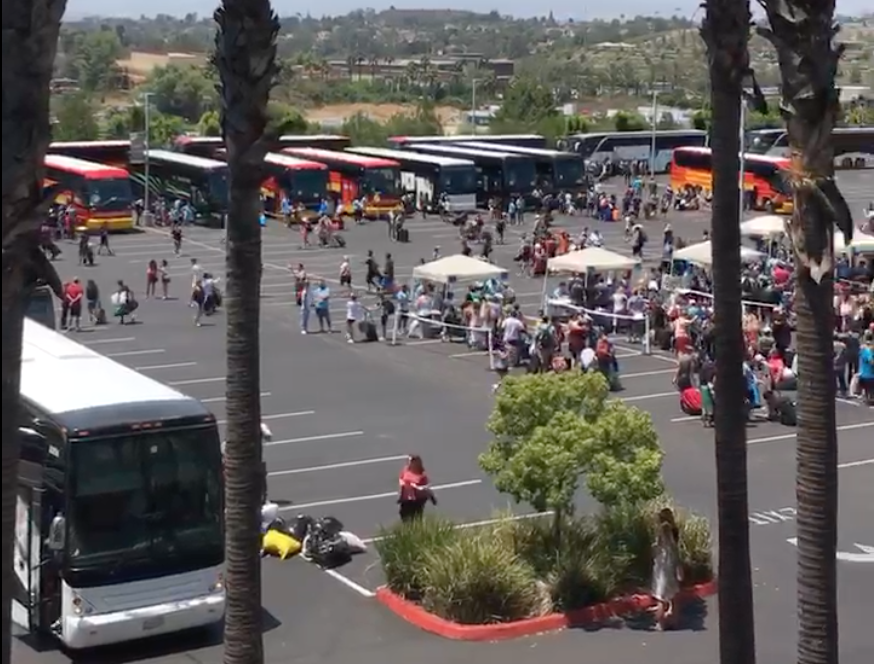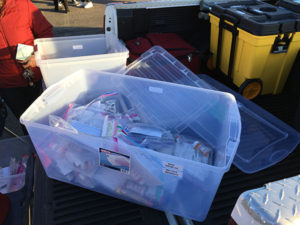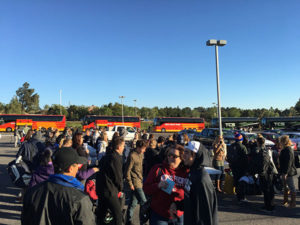
Charter Bus Rental Cost
November 21, 2016
Tips for Making the Most of Your Bus Budget
September 6, 2017Create a Group Leader’s Bus Transportation Plan to help leaders and guests have the most organized and best bus ride experience they’ve ever had.
Creating your Group Leader’s Bus Transportation Plan:
Organizing your operation is the key to any Bus Transportation Plan. Make it simple but complete, successful leaders (AKA “Sane leaders”) include a workflow from arrival on the departure date till their return date. When you’re organized you can avoid additional fees like late departures, or cost of shipping items left on your bus after the group unloaded.
Include these key components:
- Write your itinerary and send it to your charter bus provider.
- Make sure they correspond with proof the changes have been made on their work order. It’s a simple “this is what I want”, and hearing back from them “this is what I hear you saying you want”. (Heaps of mistakes on execution of an itinerary can be avoided at this point).
- Create a plan. A good plan includes:
- Create a messaging platform to communicate changes or updates with passengers
- This can be done via text blasts, facebook, leaving updates at the central office, or posting on a facebook page.
- Assign a bus “captain” to each bus
- Have a master list with all bus captains cell phone numbers, and group leaders’ cell phone number (distribute to each core leader and bus captain)
- Assign or determine how you will load the bus(es). Will guests, volunteers, or staff help the driver load the luggage bays.
- Designate a bus NUMBER or COLOR for each bus (we like colors, keep reading for why).
- Create a passenger manifest to each bus (manifest is fancy for passenger list)
- Mark where the buses will “Stage” on arrival (cones with a bus NUMBER or COLOR work well here. (NOTE: the longest standard bus is a 45′ motor coach, so if you set up staging to accommodate this bus size you can pre-stage and have luggage staged for when buses arrive.
- 8:00AM – Passengers arrive, check in
- Check off name on passenger manifest
- Share assigned bus
- Hand a Bag Marker to each passenger (bag markers can be a simple ribbon, colored to match the bus “Color” so it’s easier to find the bag or have volunteers/staff load the buses according to the passenger manifest.
- Passengers go through any medical check-in or specific group requirements at this point.
-

Some camps require medical physicals for each participant, and student camps collect meds for the staff nurse.
8:15AM – Buse(s) Arrive.
- Load bus with luggage, and if you will allow the group to place items on the bus, near their seats this can be done at that time.
- Communicate with each driver the plan for departure, and drop off.
- Introduce each bus captain to driver and communicate they are in charge of guests, and any key decisions, including RELEASING THE DRIVER AT THE DROP OFF. (More on this in a minute)
- After luggage has been loaded have the passengers line up outside the bus door (It is our experience that everyone off the bus is the easiest way to complete an accurate headcount using your passenger manifest)
- 8:35 – Bus captain checks off each name on passenger manifest as passengers load.
- After all passengers have loaded bus captain count the manifest passengers listed
- Bus captain to do a physical head count
- Bus captain communicates directly with group leader the findings and receive the green light or further instructions regarding departure
- After all passengers are loaded, and communication with group leader is confirmed, the group leader will dismiss each of the busses according to the itinerary
- AT STOPS – COUNT THE PASSENGERS
- Repeat the bus manifest check of passengers, and match with a physical headcount
- Repeat after me “No Passengers Left Behind”
- Bus captain releases the driver to proceed as planned on itinerary
- ARRIVAL AT DESTINATION PROCEDURE
- Tell Passengers to check around and under their seats to take all property off
- Have passengers help load bags of any remaining trash (to avoid costly cleaning fees from some bus providers)
- After passengers have collected backpacks, pillows and electronics bus captain dismisses group.
- Unload luggage bays onto parking lot, or designated unloading space.
- REMEMBER that handy Bag Marker now the passengers can use that as a sorting tool to find bags that might get mixed up with other buses’ luggages.
- IMPORTANT: BEFORE BUS DEPARTURE (
- INSPECT INSIDE AND LUGGAGE BAYS OF BUS for left behind baggage, or personal property.
- “Lost” forgotten property, is the number one reason passengers call a provider post-trip. Save the postage and time of a phone call, by a simple check before bus captain signs the driver’s time sheet.
- Communicate back with the office, parents, or any messaging platform you have, to share you’ve arrived safely.
- Create a messaging platform to communicate changes or updates with passengers
- Return Trip
- Communicate back with your message platform (texts, facebook, office, etc) about the scheduled time of departure (ontime, late, weather dependent, etc.).
- Follow the above loading procedure and drop off procedure to facilitate a successful end of your bus trip.
- Run through the bus one last time looking for personal items left behind.
Driver’s Gratuities: “How much should tip my driver?”
United States service mantra seems to be consistent at 10%. However on a $500.00 airport transfer versus a $15,000.00 Yellowstone 13 day “over the road tour” a 10% service fee poses quite the difference. So what’s right, fair or expected?
First: Gratuity for a driver is a PRIVILEGE for them, not an OBLIGATION for you. So, if you’re pleased with the service, awesome give them an expression of your gratitude in cash. If not, then your gratuity percentage or amount should reflect that.
Day Trip Gratuity: We see customers tip from $40-$150 per direction on a local mountain transfer that costs approximately $1,000 per direction on a motor coach bus.
Over the Road Gratuity: Often on an “over the road” tour type trip, customers will tip daily as the trip is going along, to share their continual gratitude and foster driver engagement. Remember, drivers are people too (we know not all people act like nice people, regardless of profession or expertise…people none-the-less) . Rates vary by destination, but on an Over the Road trip in the US a $100-$150 gratuity is generous, and communicates your satisfaction with the service provider.
A good Group Leader’s Bus Transportation Plan takes the guessing out of the equation, plan for the expected tolls, gratuities, and staff meal costs. But never rule out the unexpected possibilities along the way.
Be prepared for the unexpected:
Communication is key. Stay in touch.
No matter how prepared you are, and how good your bus transportation plan is, remember, stuff happens.
The variables are endless, and beyond the scope of your ability to prepare, so remember to stay a little bit pliable. As changes occur the decision order should be bus captain and driver combined knowledge and experience used to assess the circumstances, then communicate with the group leader, and operate the collaborative plan.
Keep the non-passengers informed of changes too: If you need to communicate back to your message platform to inform the destination, staff, parents, or connecting transportation, airlines, etc,.
Regardless of where you travel by bus in the United States, you need to be confident you’ve got the right bus for the job.
Charter bus group has been serving customers since 1995 as they travel to the snow, concerts, beaches, sales meetings, weddings, and special events. We’d love to help you love your next transportation experience, make your next trip go smoothly so you can enjoy the ride and the destination.
Can we help you find the right bus for your next trip?
Contact us for a free quote at 888-442-9865.



